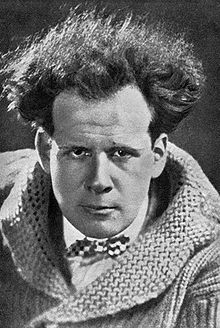All right, you’ve finished shooting. You assemble your video and your audio and your special effects and start trying to pull it altogether into a coherent whole. You think you’re finished and the big moment arrives– you show it to your friends, some crew, film company execs, sponsors, whatever. It’s boring. It’s dull. It doesn’t “move”.
You are mortified. What can you do? Don’t give up! You promise everyone you’ll go back into the editing suite and fix it. But you can’t reshoot, because the actors have gone home, the crew is dispersed, the light’s different…
No problem. Just shorten every cut. Shorten every cut to about .6 seconds. That’s right, less than a second. Cut, cut, cut. Then add some more sound effects, lasers, metal on metal, whoosh! More cuts. More, until you have about 40 cuts a minute, if not more. Loud music, loud effects. Now, let’s jiggle the camera, as if your camera was drunk, staggering around in circles, totally discombobulated. That’s it– makes it look like this is really happening to Brad Pitt, right. You can tell it’s really happening because the camera man is jiggling the camera, man. That like a documentary! Looks real. Looks really real.
Fast cuts never make any scene look great, but they prevent lousy scenes from looking really, really bad. You can’t tell any more– each shot is only on the screen for a second or less. What you have is the illusion of action and movement, which is analogous to being able to be the eyes in the heads of five different people in rapid succession. This does not reveal anything to the viewer: it merely keeps him from realizing that the director is unable to develop an interesting sequence of actions from a single point of view.
This is not the same as Eisenstein’s theory of montage: in Eisenstein’s view, each cut provides a comment on the previous and succeeding cuts, thereby creating a coherent sequence that gives meaning to the action. The famous scene of the baby carriage rolling down the steps and the Cossack holding his sword aloft and the woman about to scream…. Modern action films simply provide a succession of shots without any inner coherence at all. That would require work.

Sergei Eisenstein, also known as the Soviet Eraserhead.
Why do ALL the previews now have quick cuts going to black? Can’t anyone do anything on their own nowadays? Who started it? Who did it first? Who said now everyone has to do it the same way: short, quick cuts, fade to black, fade to black, fade to black. The audience can really tell that this film has lots of action, so they will want to see it. Do not, under any circumstances, give the audience any idea of what the movie will actually be about, because it’s not about anything: it’s guns, helicopters, and babes, and moving cameras, and explosions, and revenge and mayhem.
Event the trailers for the films that appear to be about relationships or character are now chopped into tiny little disconnected shots, fading to black…
